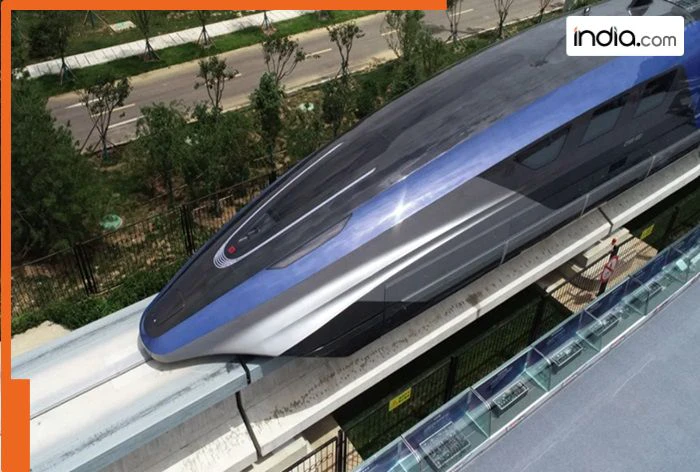India has been waiting a long time for its first bullet train. While many countries are working on high-speed rail projects, China has taken things even further.
According to reports, China has built a train that is twice as fast as a regular bullet train. This new train is called the Maglev train, and it can reach a top speed of 600 kilometers per hour.
The most interesting part about the Maglev train is that it will not run on tracks like normal trains. Instead, it will float in the air. This happens because of magnetic force, which lifts the train above the tracks and lets it glide forward with very little friction. This is why it can go much faster than bullet trains.
The train was recently shown at the 17th Modern Railway Expo in Beijing, China. The train doesn’t have wheels and moves using special magnets. This technology is called magnetic propulsion and helps the train beat even the speed of wind!
To run this kind of train, China uses special vacuum tubes with magnets. These reduce contact between the train and the track, making the train appear as if it’s floating in air.
China has already completed the first stage of this project. The train has not started commercial service yet as the testing is still going on. Once ready, it will run between major cities, separate from the regular rail network.
Designed to transform city-to-city travel
This Maglev train is expected to cover the 1,200 km distance from Beijing to Shanghai in just two hours. Earlier it used to take 5.5 hours. To compare, if such a train were to run in India, it could travel from Delhi to Mumbai in only two hours. That would be a game-changer for transportation!
Maglev Train: Clean, Quiet, and Smart
The new maglev train is not only super fast it is also clean, quiet, and energy-saving.
It runs using a special superconducting magnetic levitation technology which makes the train float above the track without touching it, so there’s almost no friction. Because of this, the train makes very little noise, doesn’t release harmful gases, and uses less energy than regular trains.
When the train goes faster than 150 km/h, it lifts off the track and floats using magnetic power. But at slower speeds, it runs on rubber wheels until it’s fast enough to levitate.
Shao Nan, a top engineer from CRRC, shared more details. He said the train is fully automatic and it drives itself. It uses 5G signals, AI video analysis, sound sensors, and other smart systems to watch the tracks and surroundings.
In China, the Shanghai Maglev is currently the fastest train in commercial operation, reaching 430 km per hour (267 mph) between Shanghai Pudong Airport and Longyang Road station.
